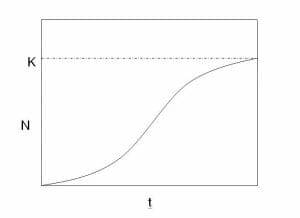The carrying capacity of an ecosystem is the largest population that it can sustain indefinitely with the available resources, also called the “maximum load” by population biologists. Carrying capacity depends on many abiotic and biotic factors in the ecosystem and some are more obvious than others. For example, the availability of the basic needs of organisms such as food, water and shelter dictates how many individuals the ecosystem can sustain. This process is self-regulating to some extent because individuals will die when the carrying capacity is exceeded. Therefore, another way to look at carrying capacity is that it is the point at which the population growth reaches zero.
Other naturally-occurring factors that influence the carrying capacity of an ecosystem include disease, predator-prey interactions, the consumption rate of resources and the number of populations in the ecosystem. However, there are other factors that are hidden, less obvious and/or disregarded which have a significant impact on populations such as pollution, eradication of habitat and climate change.

The image above shows a graph of the logistical growth of a population of individuals (N) over time (t). The K value is the carrying capacity. The line on the graph has the characteristic S-shape when the resources are limited. The line has more of a J-shape, indicating exponential growth, when there are unlimited resources available to the population.
References
- Carrying Capacity. (n.d.). In Wikipedia. Retrieved September 12, 2017 from https://en.wikipedia.org/wiki/Carrying_capacity
